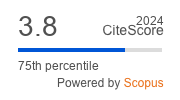Article | Open Access
Walkability and Flood Resilience: Public Space Design in Climate‐Sensitive Urban Environments
| Views: | 8344 | | | Downloads: | 6087 |
Abstract: In the contemporary urban landscape, walkability is shaped by the spatial characteristics of the built environment and its ability to adapt to environmental risks, particularly those posed by climate change. This study explores the intersection of walkability and flood adaptation strategies in waterfront public spaces across nine cities in the Baltic Sea Region, analysing their morphological characteristics with a focus on connectivity, accessibility, and climate adaptability. Using a mixed‐method approach that integrates spatial mapping, quantitative metrics, qualitative analysis, and comparative case studies, this research evaluates the effectiveness of urban structure transformations and the introduction of blue‐green infrastructure, floating structures, and nature‐based solutions in enhancing walkability while mitigating flood risks. The findings reveal significant improvements in connectivity, as indicated by extended pedestrian route networks (increases of 6%–28%), enhanced link–node ratios (increases of 24%–39%), and a substantial rise in the number of urban nodes with direct water access (150%–1900%). These results demonstrate that climate‐adaptive urban design not only strengthens flood resilience but also fosters vibrant, walkable, and socially inclusive public spaces. This study provides valuable insights for urban planners, architects, and policymakers, proposing strategies to integrate flood resilience into walkable urban environments. By emphasising the synergy between walkability and climate adaptation, this research advances the discourse on sustainable urban planning. The findings highlight the potential of adaptable waterfronts, incorporating blue‐green infrastructure and flexible design principles, to enhance urban resilience while maintaining public space quality and accessibility.
Keywords: blue‐green infrastructure; flood risk; public space design; sustainability; urban resilience; walkability
Published:
© Jakub Gorzka, Izabela Burda, Lucyna Nyka. This is an open access article distributed under the terms of the Creative Commons Attribution 4.0 license (http://creativecommons.org/licenses/by/4.0), which permits any use, distribution, and reproduction of the work without further permission provided the original author(s) and source are credited.


